Available throughout the year, the best season for Dayara Bugyal is considered Winter, Spring, and Autumn. With seasons changing, Dayara presents different sceneries. Every season is a different story, whether you want to see the Garhwal Himalayas covered in snow or enjoy the lush green alpine meadows. The best time for Dayara Bugyal trek also depends on trekker’s preference. Let’s find out the best of every season.
Every season brings in a different colour scheme for you to enjoy. White in winter, colorful in spring, golden in summer, brown in autumn and grey in monsoon.
Dayara Bugyal Trek in Various Months
Autumn – Clear horizon and Autumn Hues
Months: Mid of September to November
Temperature: In the daytime, the temperature can rise from 12℃ to 15℃; in the night, the temperature can drop to -5℃.

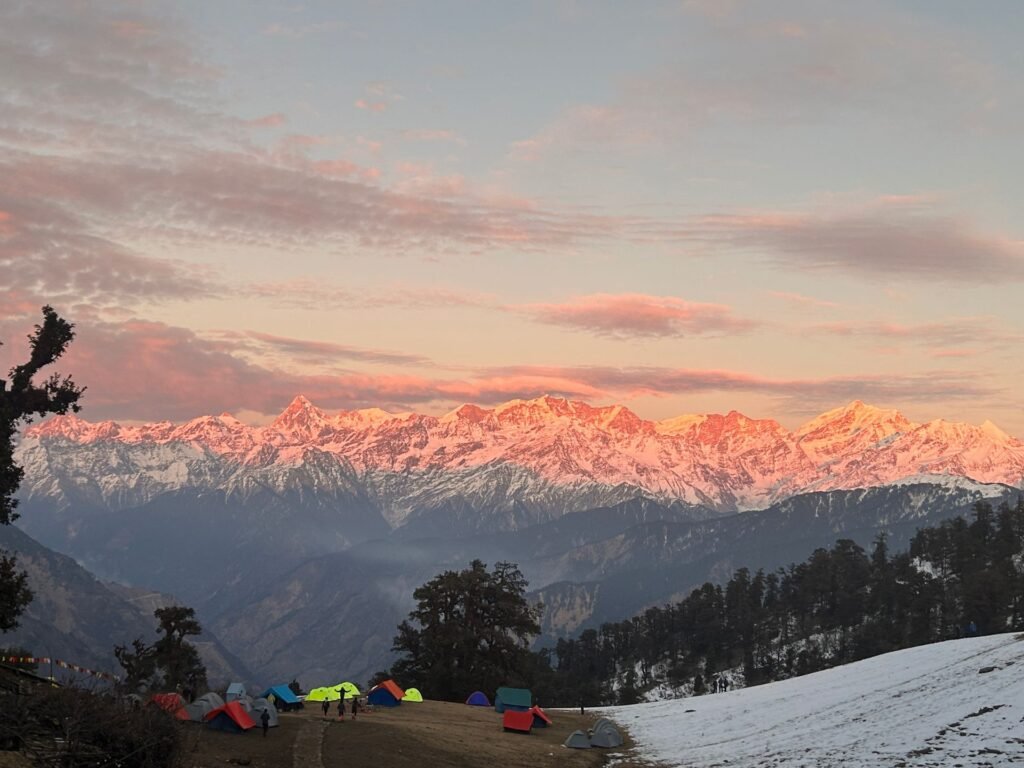

Monsoon leaves the Dayara Bugyal clean, fresh and vibrant for you. With monsoon, the whole Dayara gets covered in wildflowers and greenery. As September comes and Autumn takes on, the green shade of grass starts to turn brown slowly. Cold breeze sets in the atmosphere, and local villagers with their cattle start to descend down to Raithal. Skies are the clearest in Autumn and the whole Garhwal Himalayas is visible during this time. You can easily see like Srikanth, Bandarpoonch, and Kala Naag through the thick canopy of the forest. Autumn is also the season when you get to see newborns of Himalayan Blue Sheep.
Down in the forest of Chilapad and Gui, the maple and cedar tree leaves change colors, offering you golden brown hues to capture. Sunset at Gangotri Ranges is a sight to behold. At Raithal, it’s a different story during this season. People start harvesting the paddy, and various cultural programs are organized where locals perform Jhoda, Pandav Nritya, and Ranso (Folk dance) and worship their village deities.
If you are someone who enjoys autumn and doesn’t mind cold temperatures then this season is the best one for you. Clear skies and Autumn hues will make you fall in love with this trek. Brown and golden picturesque views await you.
Winter – Experience the thrill of doing a winter trek
Months: December to Mid-March
Temperature: In the daytime, the temperature can rise from 7℃ to 12℃; in the night, the temperature can drop to -10℃ or even lower.
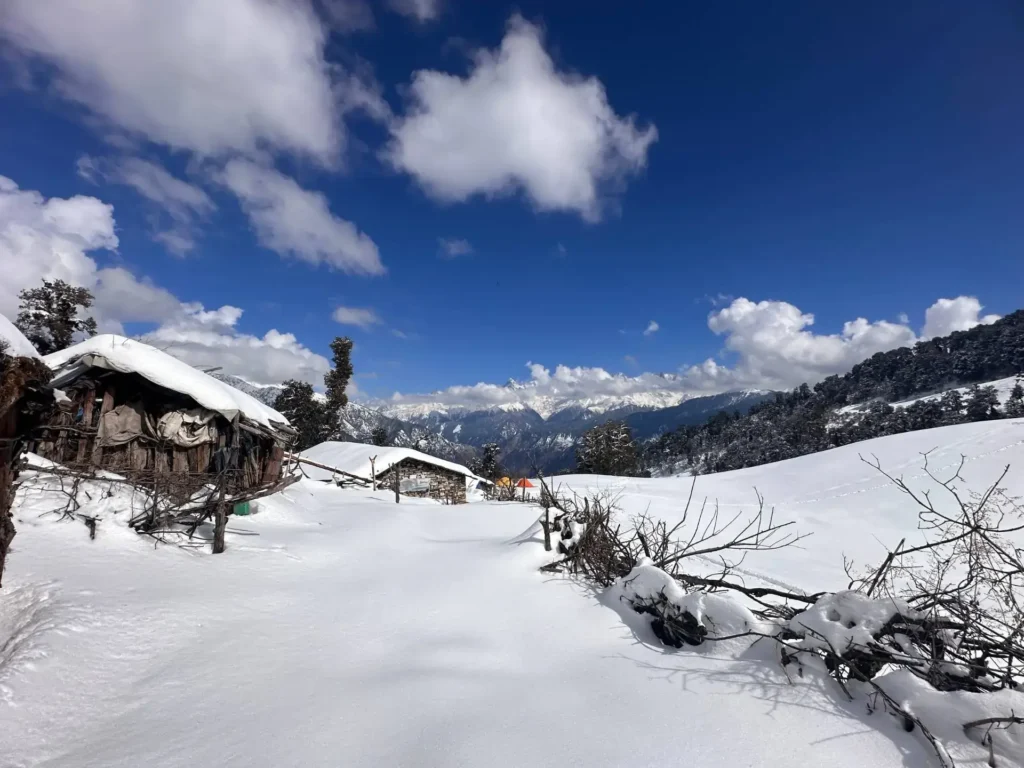
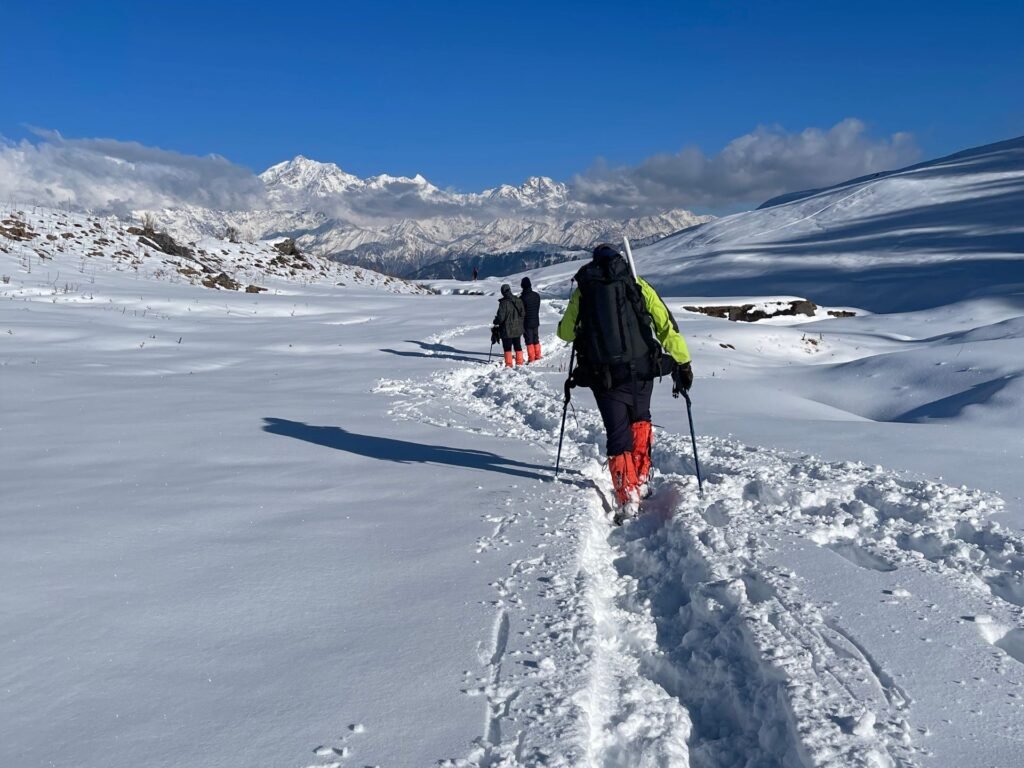

With the onset of winter, flora and fauna start changing. Local fauna such as Himalayan bears, Deer, Wild Boars, and even Leopards descend from high altitude to lower. Flora due to lower moisture, starts changing and eventually vanish. The sky-scrapping tall oak, maple and rhododendron trees add to the beauty of this scenery.
Gui Lake and Barnala Tal get frozen day by day as the temperature drops. The whole Garhwal Himalaya gets covered in a thick layer of snow once again. Peaks like Draupadi ka danda, and Gangotri ranges give a brilliant backdrop.
If you want to enjoy a snow trek that is easy and beginner-friendly then consider doing Dayara Bugyal trek in winter from Jan to Feb. Crowd is a bit on the higher side during Christmas and New Year weekend but still manageable.
Note: The temperature can drop till -10℃. Warm layers and thermals are most important during this season. Due to low temperatures, finding water might be hard so keep plenty of water with you. Make sure to check the weather forecast and pack accordingly.
Spring – Colorful surroundings
Months: Mid-March to April
Temperature: In the daytime, the temperature can rise to 15℃; in the night, the temperature can drop to 0℃.
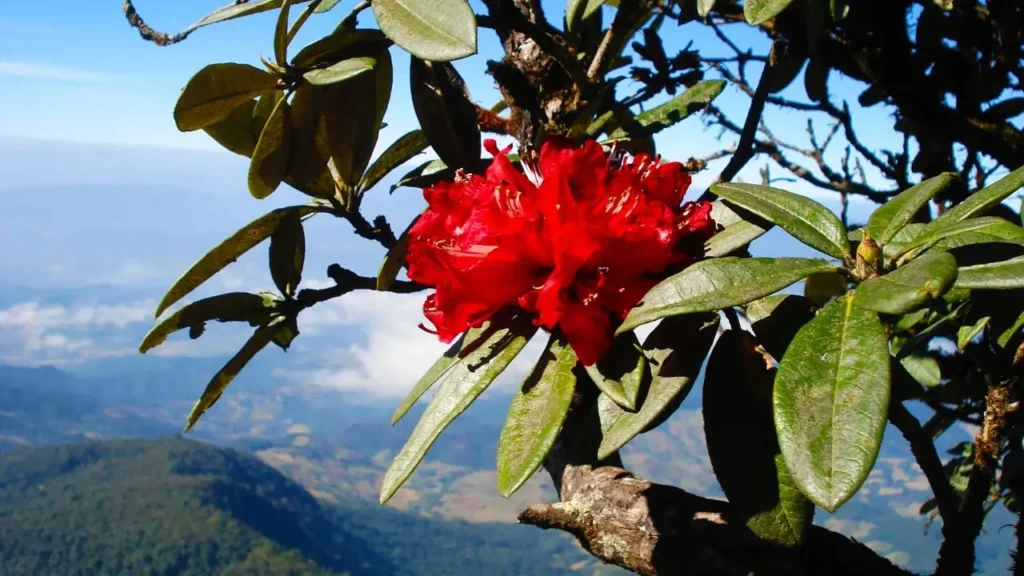
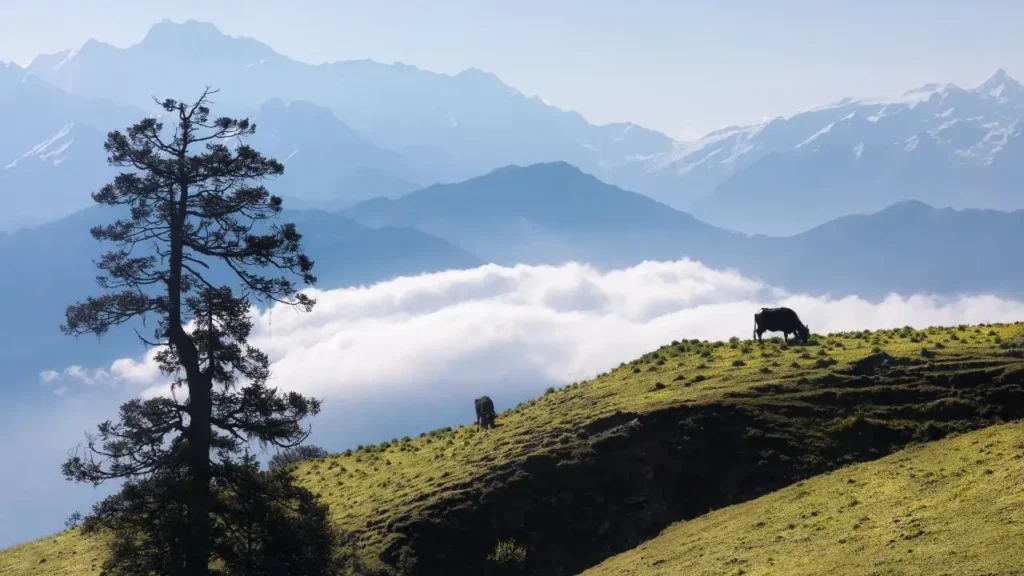

With winters receding the bugyal, the colors return to grasslands once again. With the snow melting, greenery and life stretches their arms. Spring is an excellent time for you to witness the blooms of Rhododendron trees. It offers a canvas of striking colors in shades of bright pink, red and orange. You can hear the chirping of Birds like the Himalayan Monal (State bird of Uttarakhand).
Consider the spring season if you want to do a Rhododendron trek, see the real beauty of Uttarakhand and experience the flora and fauna of this region. The whole forest at this time is covered with blossoms of Rhododendron. Himalayan bees can be seen sucking nectar from wildflowers, and fields at Raithal are covered with yellow shades of Fyoli and Mustard. It’s so beautiful around spring that I can’t even put it in words properly.
As Narendra Singh Negi said (Famous Singer of Uttarakhand) Mera dandi kanthiyo ka muluk jaleu, Basant ritu ma jayee (If you are going to the mountains, visit in Springs). This is a famous Garhwali song of our region which you can listen to here.
Summer – Suitable weather for kids and families
Months: May to June
Temperature: In the daytime, the temperature can rise from 18℃ to 23℃; in the night, the temperature can drop to 5℃.
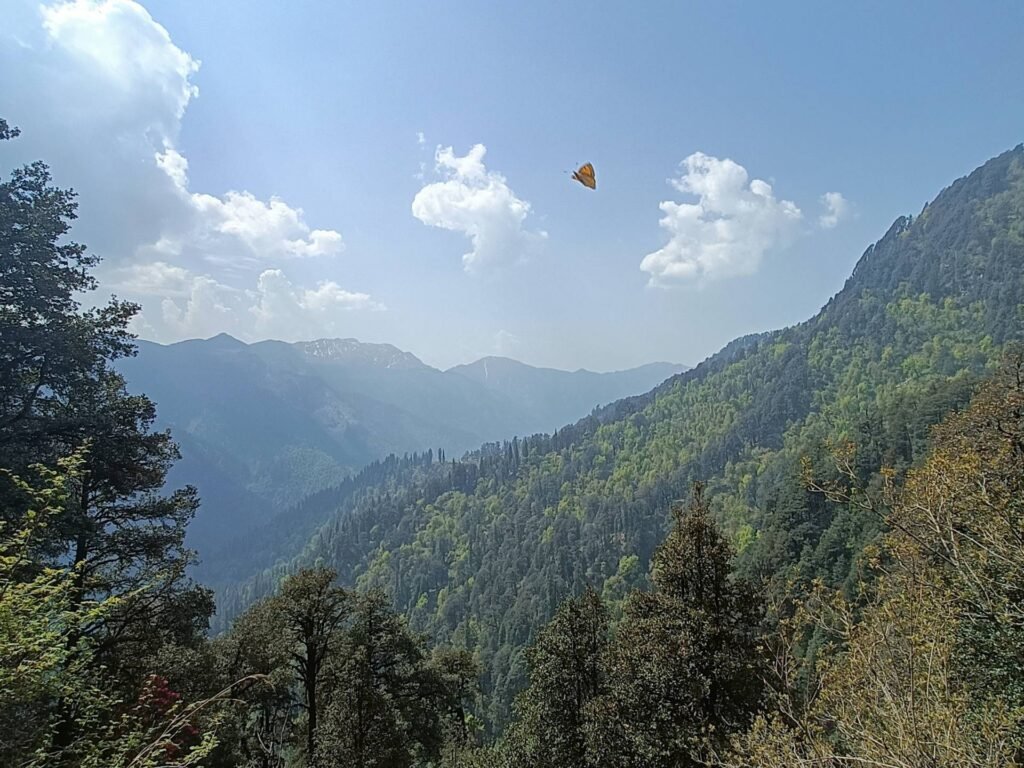
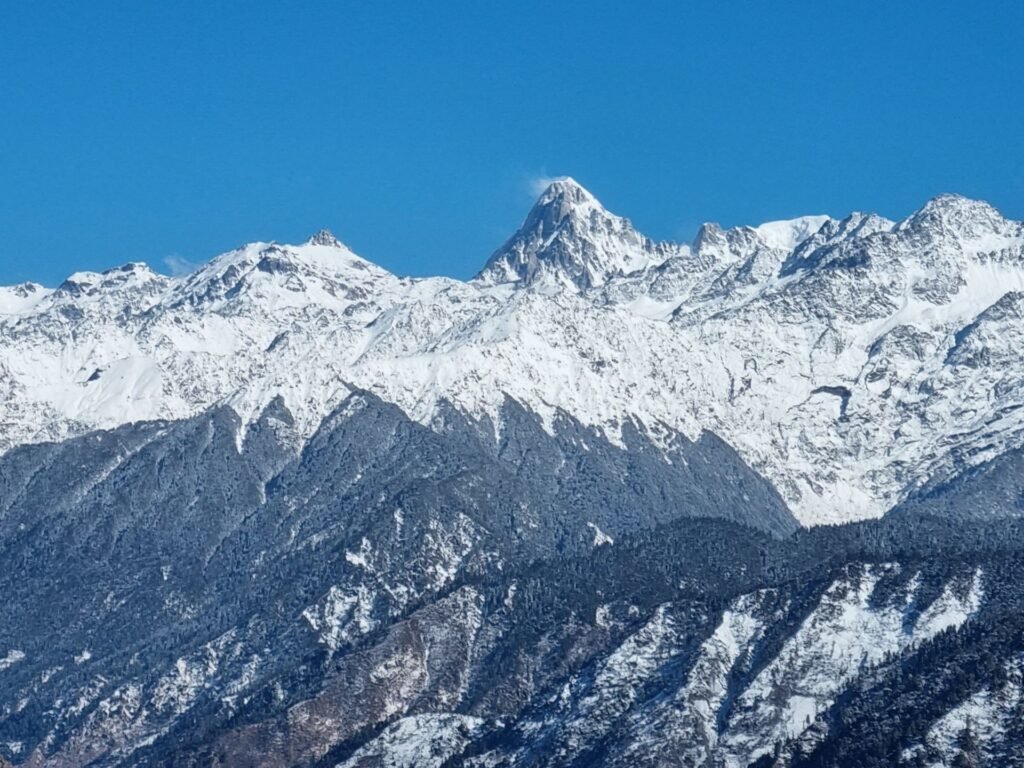
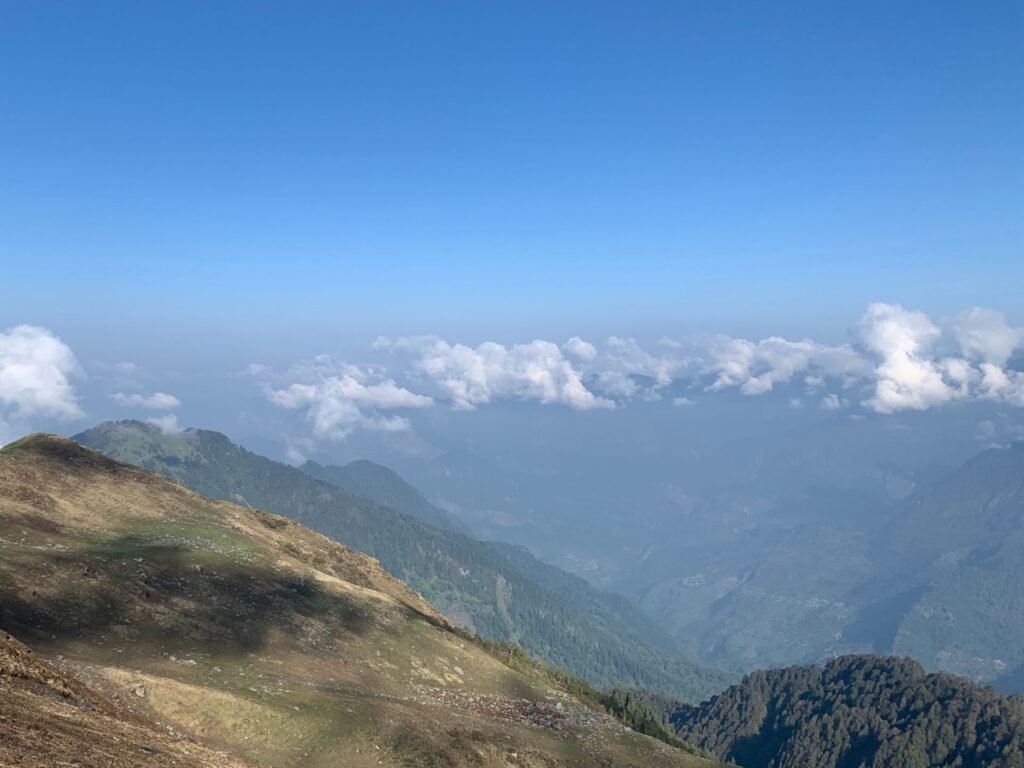
Dayara is the most comfortable in these months. Without the thick layer of snow, you can easily complete this trek. The summer season offers excellent opportunities for families to explore this trek. Without worrying about the school, you can introduce trekking to your children. If you are lucky spotting the ibex, forest sheep, and other animals may come as bonus points.
If you are a parent who wants to introduce trekking to your kids then the Summer season is best. With favorable temperatures, it becomes easy for kids to enjoy the trek and complete it. I have met a few trekkers who can’t endure the extreme cold. For them, this season is also a great time to complete this trek.
Note – Forest fires are common in the summer season. The smoke, dust particles, and pollens make it challenging to spot the peaks clearly.
Monsoon – Green meadows and wildflowers
Month: July to August
Temperature: In the daytime, the temperature can rise from 29℃; in the night, the temperature can drop to 8℃.
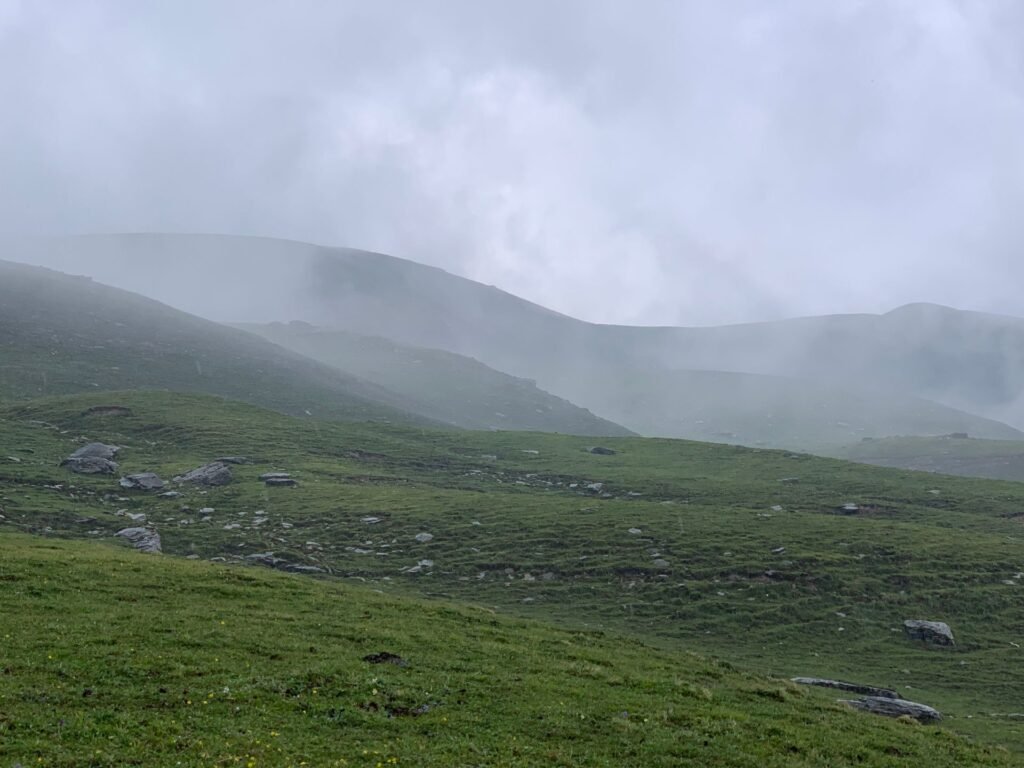
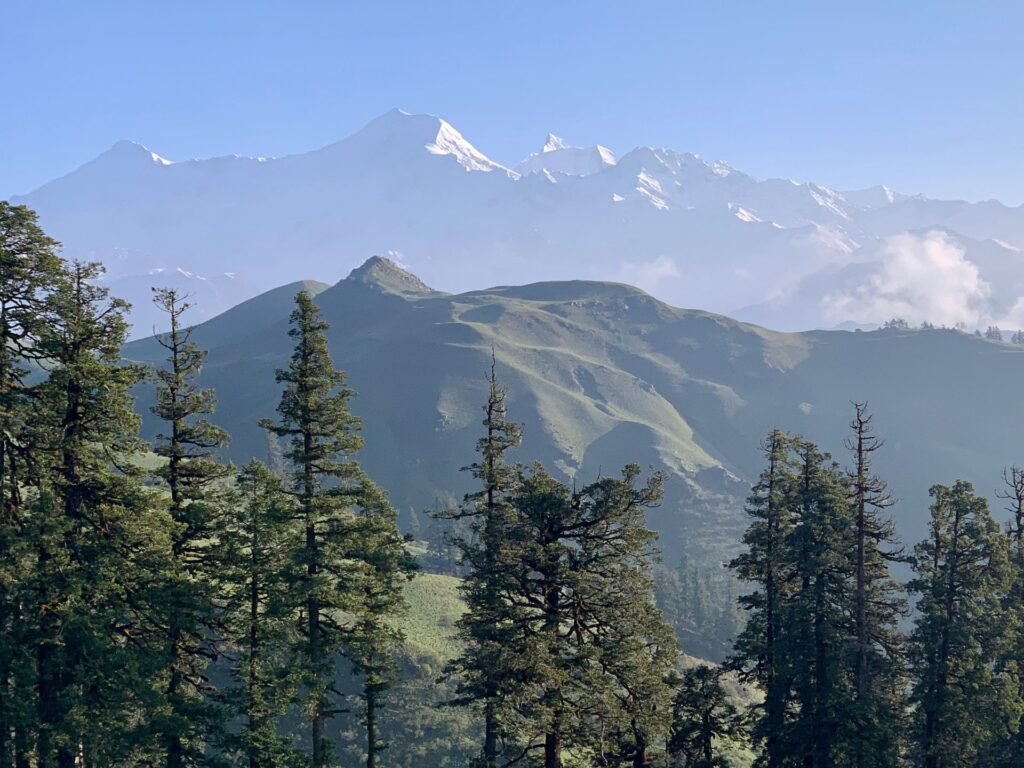
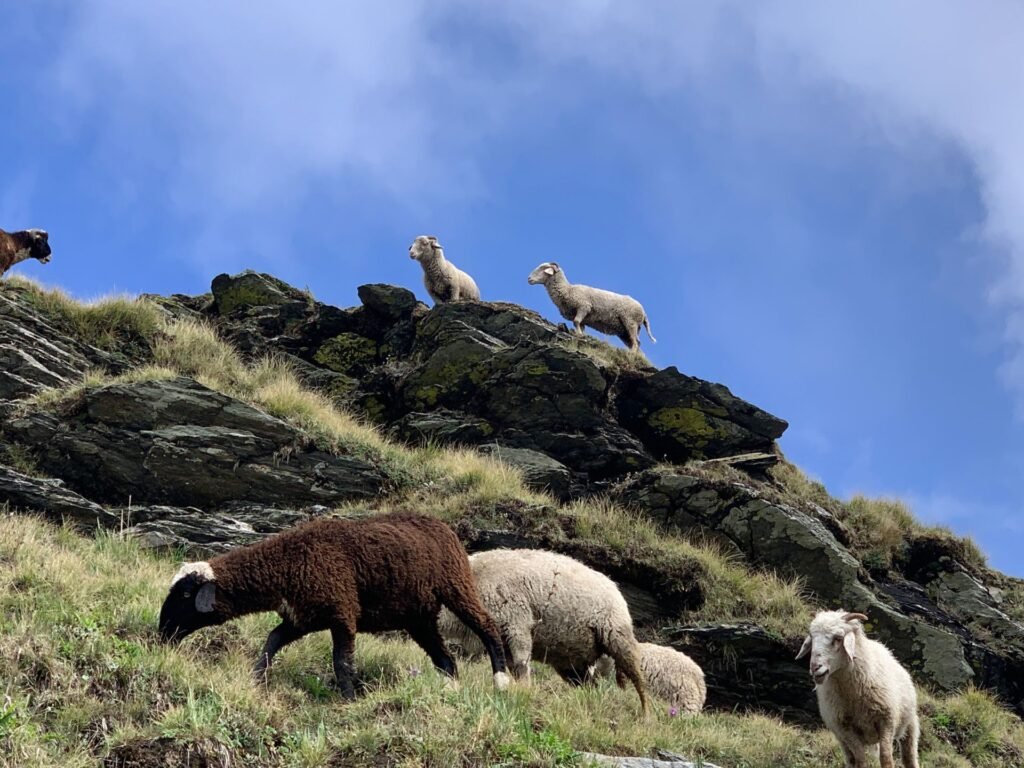
Trekking during rain can be risky. With proper planning and precautions, you can experience the thrill. It’s advised that trekkers must check the weather forecast and avoid a DIY trek in the monsoon season.
The rain rejuvenates the forests and meadow, making everything lively again. Wildlife returns and there are plenty of grazing grounds for ibex, sheep, and cattle. Apart from that, the meadow is full of wildflowers and clean water streams. The water is so clean that you can drink it right away. If someone is interested in learning about the importance of bugyals in the livelihood of Pahadi people, as well as their ecological significance, they should give Dayara Bugyal in monsoon a try.
“I did the Dayara Bugyal trek in June 2023 via the Gorsali Route. During my trek, I saw forests full of wild birds, Himalayan langurs and water streams. Initially, I didn’t notice the bird chirping, but later, when I reviewed my recorded videos, I found bird chirping in every video. I also saw a herd of Blue Himalayan Sheep. That night, we stayed with a Gujjar family, and I learned about the importance of monsoon in meadows and the lives of Gujjars.” – Says Bhuvi Uniyal.
Bonus: You can witness and learn about the famous Butter Festival of Uttarakhand during this time of the year.
Note: Most people prefer the Valley of Flowers during monsoon, but due to climate change and infrastructural development work, many landslides and cloudbursts occur during monsoon near Chamoli and Rudraprayag. As compared to Valley of Flowers, Dayara is safer and can be done in monsoon also. It’s safe to say that Dayara Bugyal can be a safer alternative to the Valley of Flowers trek.
Key Takeaways –
With each season with its specialty, it isn’t easy to best season for Dayara Bugyal. By using the given details, you can decide which path to walk on – snowy, golden, or green and which season suits you the best. There’s always a chance for you to return and go to Dayara Bugyal and experience each season’s specialty.
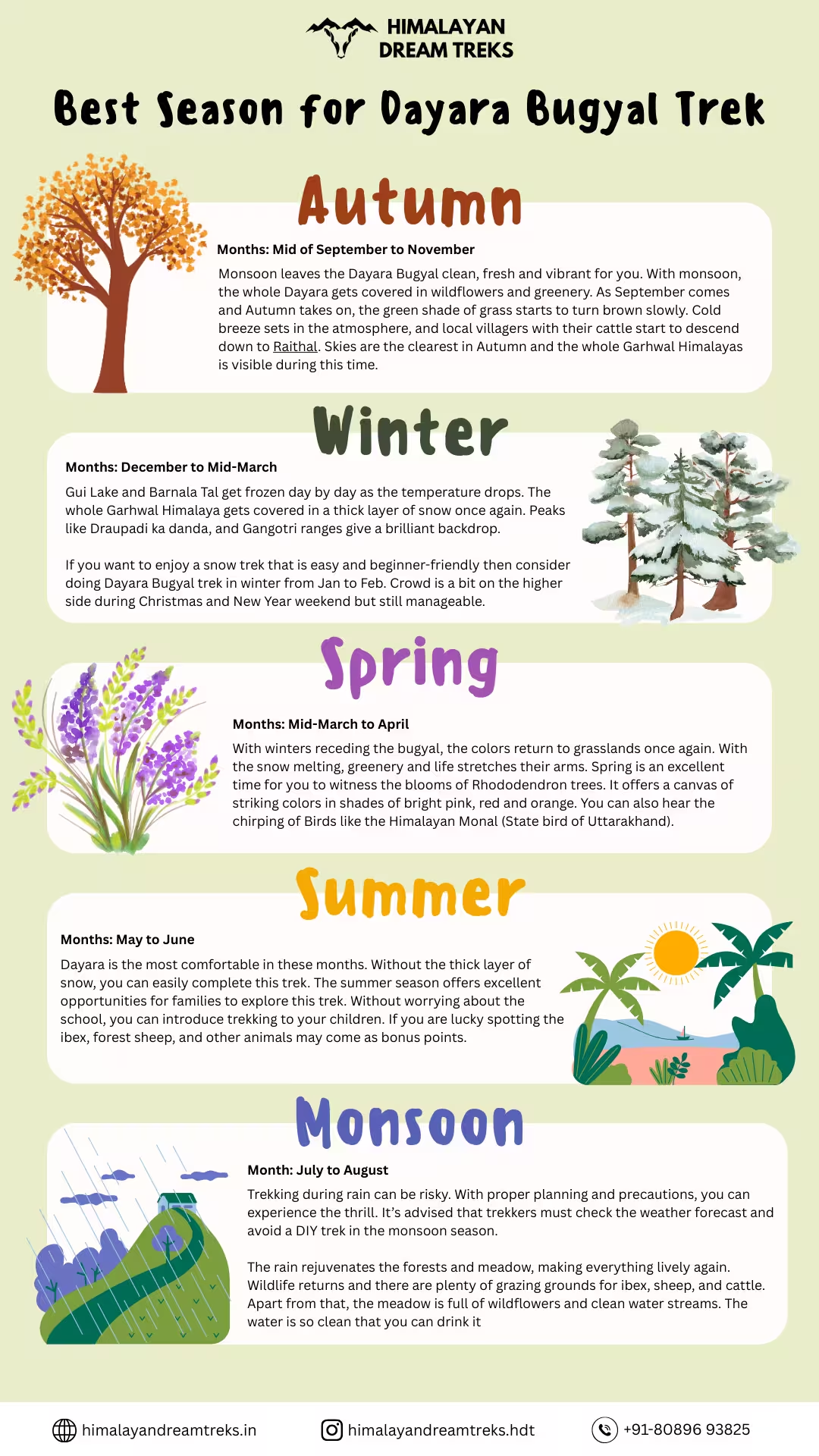

Leave a Comment